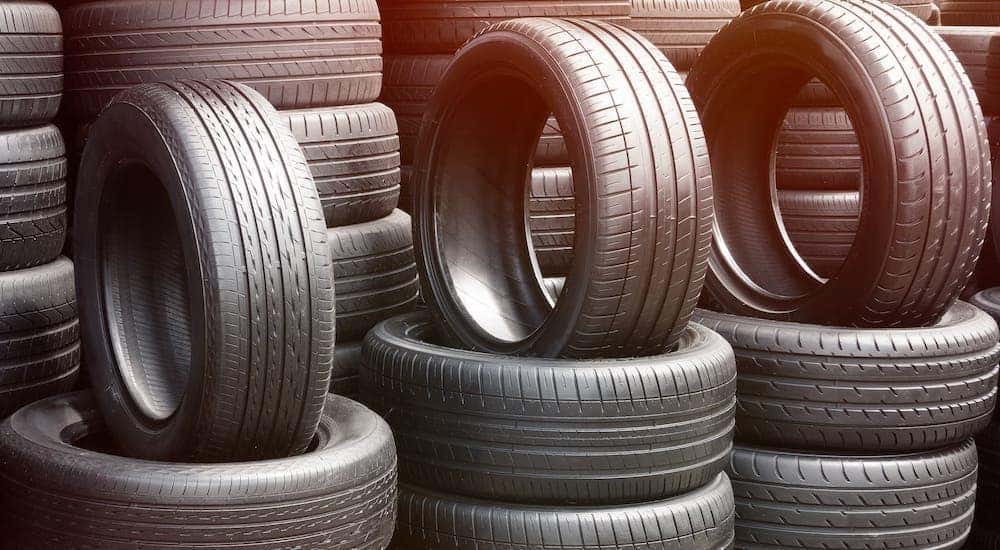Tire Service: Understanding Tire Stress Monitoring Solutions
Recognizing Tire Pressure Surveillance Systems (TPMS) is a crucial element of preserving optimal car efficiency and security when traveling. With developments in vehicle technology, TPMS has come to be a basic attribute in modern lorries, offering real-time info on tire stress levels. Delving deeper into the complexities of TPMS, one can reveal the various components that compose this system and the value of each in ensuring precise tracking. From direct to indirect TPMS systems, the landscape of tire pressure monitoring varies, each with its special set of advantages and considerations. Stay tuned to unravel the complexities of TPMS, from upkeep pointers to the undeniable advantages of keeping your tires appropriately inflated. tires morris il.

Importance of TPMS
The value of Tire Pressure Tracking Systems (TPMS) hinges on their ability to boost automobile security and performance with real-time monitoring of tire stress degrees. Maintaining the proper tire stress is crucial for making certain optimum handling, braking, and overall security of an automobile. TPMS offers chauffeurs with immediate responses on any type of underinflated or overinflated tires, allowing for prompt modifications to be made.
Components of TPMS
Consisting of different important elements, a Tire Stress Surveillance System (TPMS) functions as an innovative safety and security feature in contemporary automobiles. The major components of a TPMS include sensors, a control module, and a warning sign. Sensing units are generally located in the tire valve stem or affixed to the wheel setting up, where they determine tire pressure and send information to the control component. If it detects significantly low pressure in any of the tires, the control module procedures this information and sets off a warning. The warning indication, frequently an icon on the dashboard, alerts the driver to check the affected tire or tires. Some progressed TPMS designs additionally show the actual tire pressure readings for each and every tire, supplying drivers with real-time details to make sure ideal tire performance and security. By checking tire pressure continuously, TPMS helps protect against crashes, decreases tire wear, and enhances fuel performance, making it a critical element for car safety and efficiency.
Types of TPMS

On the other hand, indirect TPMS relies upon the automobile's wheel rate sensing units to monitor tire pressure. This system identifies underinflation by comparing the rotational speeds of the wheels. Indirect TPMS is less costly than straight TPMS, as it uses existing sensors within the vehicle.
While direct TPMS provides a lot more exact readings, indirect TPMS is simpler in design and generally needs much less maintenance. Both systems have their Discover More Here advantages and limitations, and the selection in between them often relies on elements such as price, vehicle make, and personal choice. Comprehending the distinctions in between these 2 kinds of TPMS can assist car proprietors make notified decisions relating to tire maintenance and safety.
TPMS Upkeep Tips
Effective upkeep of TPMS is necessary for guaranteeing optimum performance and security of your lorry. Regularly inspecting the TPMS sensors for any type of damage or rust is critical. Make sure that the sensors are tidy and free from particles that might hinder their functioning. Furthermore, it is suggested to examine the sensor batteries regularly and change them as required to guarantee exact analyses. Conduct regular checks on the tire stress degrees and contrast them with the TPMS readings to guarantee they correspond. If there are any discrepancies, rectify the system adhering to the producer's standards. Throughout tire rotation or substitute, make sure that the TPMS elements are taken care of thoroughly to protect against any type of possible damage. If the TPMS cautioning light brightens on the control panel, address the issue immediately by examining the tire pressures and the general system for any kind of mistakes. By sticking to these upkeep tips, you can lengthen the lifespan of your TPMS and enhance the security of your driving experience.
Benefits of Appropriate Tire Pressure
Preserving appropriate tire pressure, as highlighted in TPMS Maintenance Tips, is important for enjoying the many advantages connected with optimum tire stress levels. One of the primary benefits of maintaining the correct tire pressure is boosted gas effectiveness. When tires are effectively inflated, there is much less moving resistance, resulting in better fuel economic climate. Furthermore, appropriate tire pressure ensures also tire wear, prolonging the life expectancy of the tires and advertising much safer driving conditions. With the why not look here right tire stress, automobiles likewise have better handling and traction, particularly in adverse weather. This can improve overall driving efficiency and safety and security for the driver and guests. Moreover, maintaining optimal tire stress can contribute to a smoother and more comfy ride by lowering resonances and sound caused by underinflated tires. Finally, the benefits of proper tire pressure exceed simply tire longevity; they include improved fuel performance, improved safety and security, far better automobile performance, and total driving comfort.
Verdict
In conclusion, recognizing tire stress surveillance systems (TPMS) is critical for maintaining optimal tire pressure and making sure lorry safety and click over here security. By recognizing the relevance of TPMS, knowing with its components, knowing the different types offered, adhering to proper maintenance suggestions, and recognizing the benefits of maintaining proper tire stress, drivers can enhance their driving experience and prolong the lifespan of their tires. Proper tire pressure is vital to safe and efficient lorry procedure.
